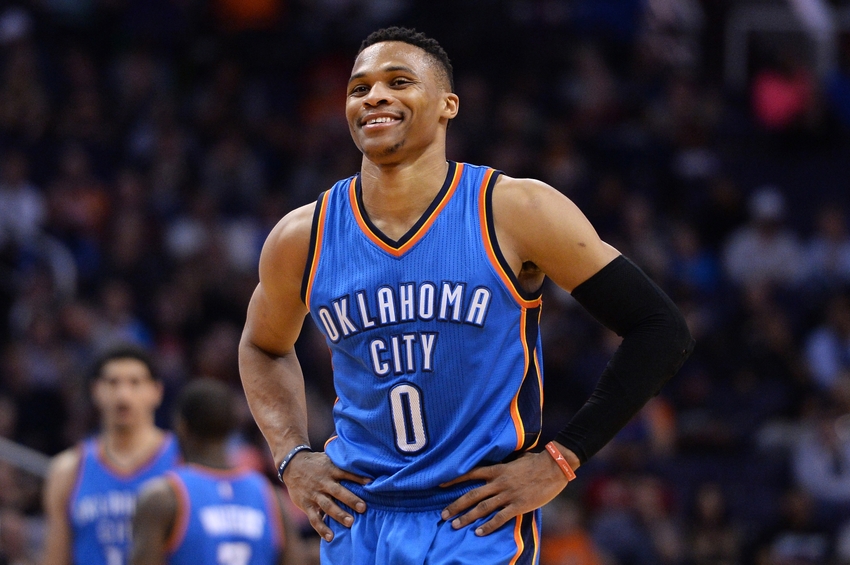Bradley Beal: Bradley doing Bradley ish. Helped guide his club to its fifth win of the year against the sputtering Heat. His laser shot sets up his savvy drive so well this year. The 5 turnovers hurt a bit, but he’s the only alpha in the nation’s capital.
Please, blog, may I have some more?

Allen Iverson
Is there anything better than getting unexpectedly great performances from your players in the first game of the season? Maybe they’ll do this EVERY GAME! I’m suddenly reminded of Michael Carter-Williams’ rookie debut of 22/7/12 with 4 threes and 9 steals. Of course we know that regression to the mean is coming to rain on our parade soon enough. But, there are guys that make leaps in production for entire seasons, and identifying them is one of the keys to winning. This is an outlier, but I fondly remember picking up Shawn Marion a few games into his second season, my first in fantasy, in which he finished as a first-rounder. He led me to a debut title, and I was hooked.
I’m generally very active in my leagues. However, I’m often slow to trust guys that come from out of nowhere. No prospect pedigree? I generally chalk it up to luck. I’m much more likely to speculate on players that have shown something in the past. But, sometimes dudes do just show up. I remember being way too slow to trust Hassan Whiteside’s explosion onto the scene in Miami. Another guy that I just refused to believe in for the longest time was Robert Covington. “Who’s this undrafted guy from a small school putting up big steals and threes on the Sixers? Never heard of him. They’re tanking. Of course they’ve got to have somebody taking shots and getting minutes.” I didn’t think it would last. And if he was too good, I thought they’d probably sit him more, so he wouldn’t accidentally help them win too many games. For players with whom I’m not familiar, I’m always waiting for the sample size to get bigger. But you can’t wait too long, or you’ll miss your chance. If you can identify the right guys, you can still snatch up some of this season’s impact players as a free agent. So, how can we tell what’s likely to continue? What should we be watching for in these first few games that might be predictive?
Please, blog, may I have some more?
I apologize for the click-bait title right away. However, the sentiment is correct, since Westbrook will go too high to be drafted by the savvy fantasy owner.
“Why is this??” You ask incredulously. Good question! I’ll tell you!
I absolutely love Westbrook in real life. He plays with a passion that rivals the likes of Bryant, Iverson, the original Isaiah Thomas, and many other greats. However, he will kill your fantasy team. I’m sure you can already guess why, but hear me out.
Please, blog, may I have some more?You aren’t going to find too many elite fantasy basketball assets sitting on an NBA bench. You’re going to find them on a 50’ wide by 94’ long stretch of hardwood, running their shoes tread-bare.
Fantasy production or “numbers” – essentially the only thing you’re mining for as you prepare for your drafts – is what results from the beautiful union between talent and opportunity.
Talent with limited opportunity (think: Jonas Valanciunas) leaves you with little choice but to sit back and wonder what could have been. Conversely, all the opportunity in the world afforded to players short on talent (I’m looking at you, Courtney Lee) has you questioning why you’re tending to vines that bear no fruit.
Unfortunately, in the world of the National Basketball Association, opportunity is usually held to a finite number each night – and that number is 240. Two hundred and forty minutes is all a given team can distribute amongst its roster during a regulation game. (For our purposes here today we’ll refrain from delving into the impact of overtime/multi-overtime games adding to the pool of minutes, though it does obviously impact the calculus.)
With NBA coaches now regularly employing rotations of nine and 10 men, there are very few players (regardless of talent, youth and good health) who are asked to play more than 75% of a game. In point of fact, during the 2014/2015 NBA season a grand total of six players averaged over 36 minutes of court time. Go just one year farther back and that number jumps to 16. The 12-13 campaign? 22 such players eclipsed the 36 MPG mark and seven ran for over 38 minutes a night. And to really put things into perspective – less than a decade ago we saw nine players average 40 minutes, with the kicker being that none of them missed more than 10 games.
Please, blog, may I have some more?



